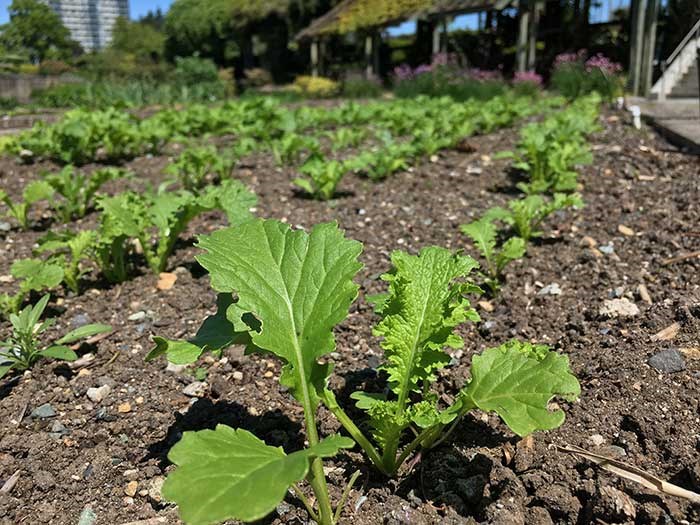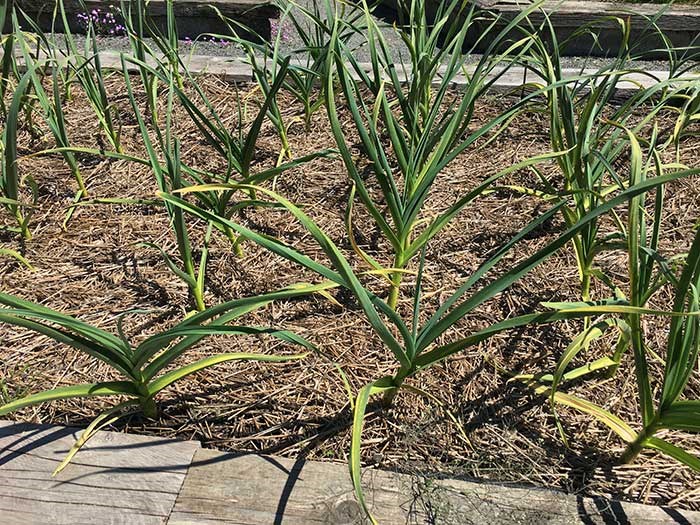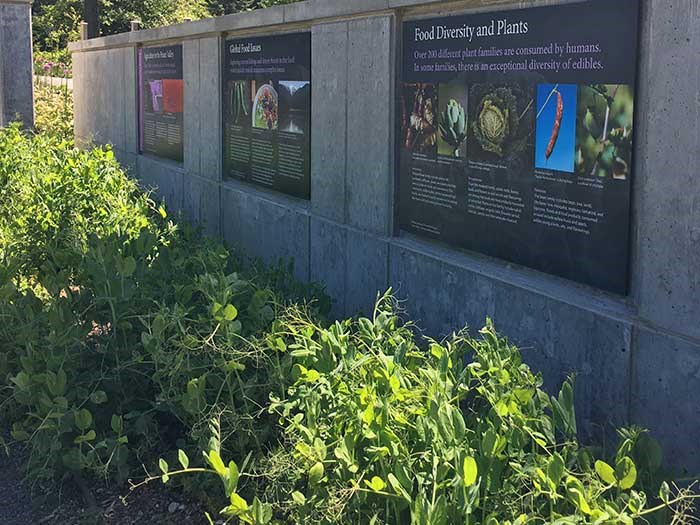by Matias Taylor
Beyond the rows of wild collected Rhododendrons of the David C. Lam Asian Garden, past the striking architecture of the Moon Gate, and through the tunnel connecting the grounds across Southwest Marine Drive lies one of the highlights of UBC Botanical Garden: the Food Garden. The area consists of a series of raised beds, partially enclosed by espalier trained apple and pear trees, where a diversity of herbs, vegetables, and fruits are grown year-round. Brendan Fisher, who has been a horticulturist at UBC Botanical Garden for the last 10 years and has tended to the Food Garden since 2012, shares some of the secrets that make this place an enduring attraction.

“We exclusively practice organic gardening techniques” says Brendan, reflecting the Food Garden’s philosophy of growing things as naturally as possible, without the use of pesticides. Visitors can explore seven different beds—including roots, tomatoes, and brassicacae—where crops are rotated on a yearly basis—a technique that prevents build up of insects and disease (“that’s what happens when you grow in the same soil year after year”).
The Food Garden sees activity all year round, with fruit tree pruning in February and March, and early March planting for most crops (including spinach, mustards, and peas). The rate of harvesting increases sharply in the summer—about once a week—and the food is picked by volunteer Friends of the Garden and shipped to the Salvation Army’s food bank, where it benefits the hungry and homeless on the city’s Downtown Eastside. Cold frames still produce plenty of crops—Swiss chard, arugula, and kale are all planted in the fall—and many of these grow all through winter until harvest season. Delta-based West Coast Seeds provide all the seeds and root vegetables used in the Garden.

Brendan attributes a mixture of fascination for growing food and a desire for increased sustainability to why people are so attracted to the Food Garden. “People are interested in learning what vegetables they can grow at home, since a lot of people are only used to seeing them at a supermarket, and they also want to reduce their ecological footprint”. New signage also offers educational opportunities, with plenty of information about the food grown at local and global levels.

As far as key advice goes for those who want to plant their own crops at home, Brendan recommends not overwatering (4-5 times a week is too much), as well as watering deeply with efficient irrigation systems like in-ground systems and misters as opposed to overhead watering.
This summer, visitors can look forward to new additions to the Food Garden including peanuts in the root vegetable bed, grain crops such as quinoa, wheat, and amaranth, as well as watermelons and cantaloupes (which are part of an experiment to try out different growing methods by placing by the beds in a warmer location). The Garden always aims to select organic certified seeds for new varieties, and focuses on heirloom selections. This year also marks the inauguration of the new espalier renewal planting, with selections of disease and insect resistant varieties along with new fig trees, apricots, grape varieties, apples, and pear trees.


